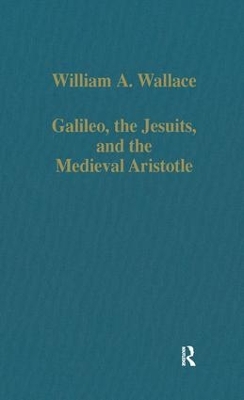Variorum Collected Studies
2 total works
The unifying theme in this second volume of essays by William A. Wallace to be published in the Variorum series is signaled in the title of the opening paper: 'Domingo de Soto and the Iberian roots of Galileo's science'. The seven essays in the first part provide textual studies of Soto's early formulations of the laws of falling bodies, the context in which they were developed in the 16th century, and the ways in which they were transmitted in Spain and Portugal to the early 17th century, mainly by Jesuit scholars. The following essays focus on the young Galileo and his work at Pisa and Padua, leading to his discovery of the law of uniform acceleration in free fall. Textual evidence is presented for an indirect influence of Soto's work on Galileo, mediated by Jesuits who were teaching at Padua in the first decade of the 17th century.
The conventional opposition of scholastic Aristotelianism and humanistic science has been increasingly questioned in recent years, and in these articles William Wallace aims to demonstrate that a progressive Aristotelianism in fact provided the foundation for Galileo's scientific discoveries. The first series of articles supply much of the documentary evidence that has led the author to the sources for Galileo's early notebooks: they show how Galileo, while teaching or preparing to teach at Pisa, actually appropriated much of his material from Jesuit lectures given at the Collegio Romano in 1598-90. The next articles then trace a number of key elements in Galileo's later work, mainly relating to logical methodology and natural philosophy, back to sources in medieval Aristotelian thought, notably in the writings of Albert the Great and Thomas Aquinas. La mise en opposition conventionnelle entre l'aristotelisme scolastique et la science humaniste a ete de plus en plus remise en question durant les dernieres annees. Tout au long de ces articles, William Wallace tente de demontrer que l'aristotelisme progressif a en fait pourvu le fondement des decouvertes scientifiques de Galilee. Le premier groupe d'articles fournit la plupart des preuves documentees qui ont mene l'auteur aux sources des premiers cahiers de notes de Galilee; on y voit comment celui-ci, alors qu'il enseignait, ou s'apprAtait A enseigner A Pise, s'etait en fait approprie quantite de donnees issues de cours magistraux jesuites qui avaient ete donnes au Collegio Romano entre 1588 et 90. Les etudes suivantes retracent A leur tour un certain nombre d'elements-clef des travaux ulterieurs de Galilee, se rapportant plus particulierement A la methodologie logique et a la philosophie naturelle, jusqu'A leurs sources dans la pensee aristotelicienne du Moyen Age, notamment dans les ecrits d'Albert le Grand et de Thomas d'Aquin.

